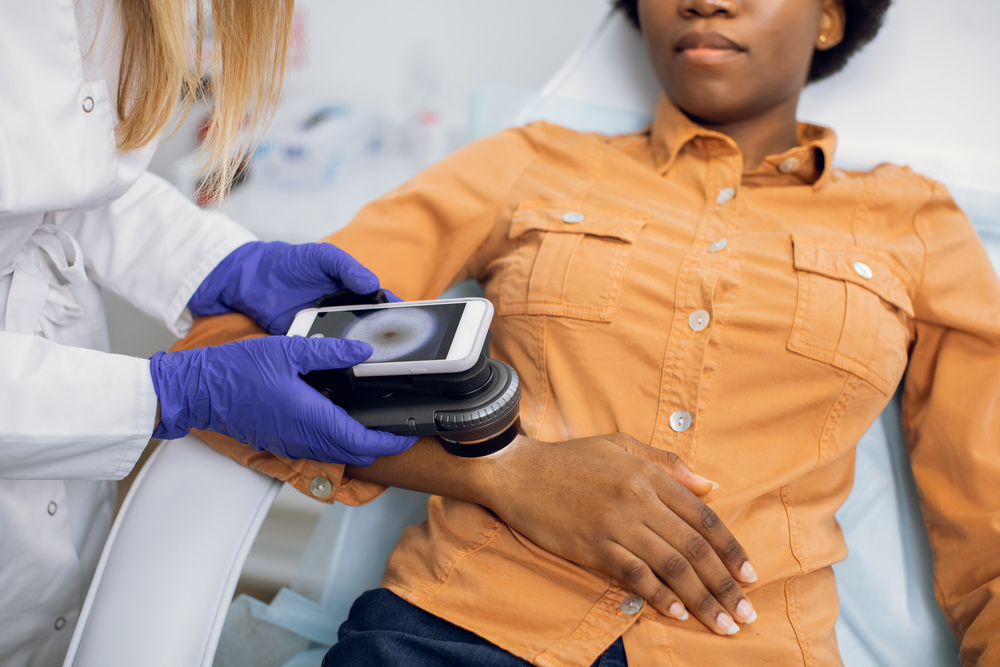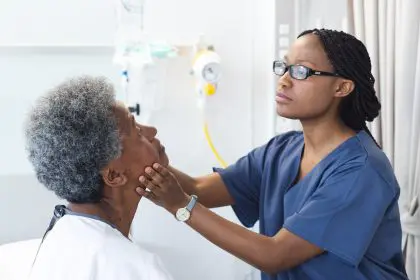Moles are a common feature on our skin, often seen as harmless spots that add character to our appearance. However, when these moles begin to grow or change in appearance, it’s a signal your body should never ignore. Growing moles on your body demand immediate attention because they can be indicators of underlying health issues, including the potential for skin cancer. The focus here is not just on the aesthetic aspect but on these changes’ crucial role in signaling something far more serious.
Understanding moles and their normal behavior
Moles are clusters of pigmented cells that often appear as small, dark brown spots. They can be present from birth or develop during childhood and adolescence. Most moles are benign, meaning they’re not harmful. However, normal moles typically have a uniform color, a smooth texture, and a regular shape. They can be flat or raised, and their size usually remains stable over time.
When should you worry about a mole?
The key reason growing moles on your body demand immediate attention is that they can be a sign of melanoma, a serious type of skin cancer. Melanoma can be life-threatening if not caught early, and it often starts as a change in the size, shape, or color of an existing mole or as a new growth on your skin. Here are the critical signs to watch for:
- Change in size: If a mole begins to grow, it’s a red flag. Any rapid increase in size should prompt a visit to a healthcare professional.
- Irregular borders: Moles with notched, blurred, or uneven edges could be a sign of cancerous changes.
- Color variations: A mole that changes color or has multiple colors (shades of brown, black, red, white, or blue) should be examined immediately.
- Asymmetry: If one half of the mole does not match the other in size, shape, or color, it could indicate melanoma.
- Itching, pain, or bleeding: Moles that itch, become tender, or bleed are abnormal and require medical evaluation.
These changes are often grouped under the ABCDEs of melanoma—asymmetry, border, color, diameter, and evolving—which serve as a helpful guide in assessing whether a mole might be a cause for concern.
The emotional and physical impact of ignoring growing moles
It’s natural to feel anxious or scared when noticing changes in your skin. Many people ignore growing moles, hoping they’ll disappear or fearing the worst. However, the emotional toll of not addressing these changes can be immense. Living with the uncertainty of whether a mole is benign or malignant can lead to stress and anxiety, which, ironically, can impact your overall health.
Physically, the consequences of ignoring a suspicious mole can be dire. If a mole is cancerous and left untreated, it can spread to other parts of the body, making treatment more difficult and reducing the chances of a successful outcome. Early detection is crucial and can significantly increase the likelihood of survival.
Taking action: What to do if you notice a growing mole
If you observe a growing mole or notice any other concerning changes, the first step is to consult with a dermatologist. Dermatologists are specialists in skin health and can thoroughly examine whether the mole is benign or needs further testing.
- Skin examination: The dermatologist will examine your skin and may use a dermatoscope, a tool that provides a magnified view of the mole, to look for signs of melanoma.
- Biopsy: If the dermatologist suspects that the mole may be cancerous, they may recommend a biopsy. This procedure involves removing a small piece of the mole, or the entire mole, for laboratory analysis.
- Follow-up care: The dermatologist will discuss the next steps depending on the biopsy results. If the mole is benign, you may need regular check-ups to monitor for future changes. If it’s malignant, the dermatologist will outline a treatment plan, which may include surgery, radiation therapy, or chemotherapy.
The importance of regular skin checks
Growing moles on your body demand immediate attention when changes occur and as a part of regular skin care. Conducting regular self-examinations can help you catch any changes early. Here’s how to perform a self-examination:
- Use a mirror: Stand in front of a full-length mirror in a well-lit room. Use a hand mirror to check areas that are hard to see, like your back.
- Examine all areas: Don’t just check your arms and legs. Examine your scalp, between your fingers and toes, the soles of your feet, and even the areas where the sun doesn’t shine.
- Document changes: Take photos of your moles and compare them over time. This can help you notice any subtle changes that might otherwise go unnoticed.
- Involve a partner: If possible, ask a partner to help check areas you might miss. They can also provide a second opinion if you notice something concerning.
Conclusion: Protect your health by paying attention to your moles
In conclusion, growing moles on your body demand immediate attention because they are potential warning signs of skin cancer. By being vigilant and proactive about changes in your skin, you can protect yourself from the severe consequences of melanoma. Don’t let fear or uncertainty prevent you from seeking medical advice. Early detection is key, and your health is worth the effort.
Taking care of your skin and monitoring changes in your moles isn’t just about aesthetics—it’s about safeguarding your life. So, the next time you notice a mole growing or changing, take it seriously and consult a dermatologist. Your future self will thank you for it.
This story was created using AI technology.














